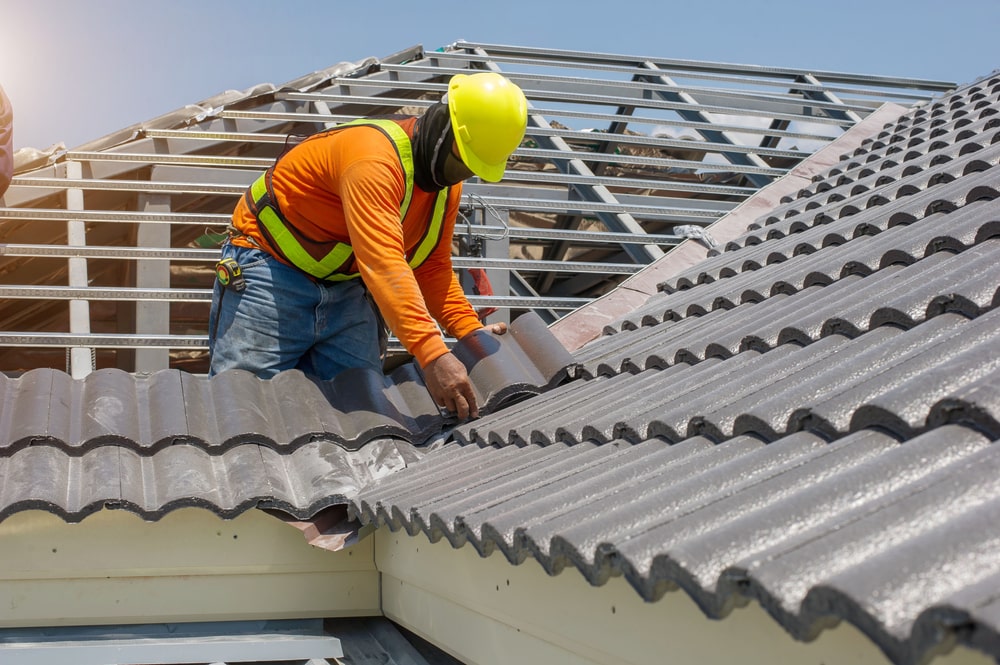Best Practices for Ensuring Correct Roof Covering Ventilation
A balanced consumption and exhaust air vent proportion, frequently 1:300, plays an essential duty, with consumption vents ideally put at the reduced edge of the roofing for great air access and exhaust vents at the top for warm air departure. Maintaining insulation away from vents is essential to protect against air flow restriction.
Understand Air Flow Basics
Effectively comprehending ventilation fundamentals is necessary for making sure the long life and performance of roof systems. Efficient ventilation alleviates wetness buildup and temperature extremes in the attic room, both of which can lead to considerable structural damages in time. A well-ventilated roof covering helps in avoiding common concerns such as mold growth, timber rot, and ice dams, which can jeopardize the integrity of the roof materials and the underlying structures.
The main objective of air flow is to help with the activity of air, permitting a consistent exchange between the outdoor and interior atmospheres. This balance is attained through a combination of consumption and exhaust vents that work together to preserve ideal air movement. Intake vents, usually located along the eaves or soffits, allow fresh air to get in the attic space, while exhaust vents, often situated at or near the roof ridge, enable warm, humid air to get away.
Secret elements influencing the performance of roof covering ventilation include proper positioning, adequate sizing, and ensuring that both intake and exhaust vents are unblocked. Normal inspection and upkeep are crucial to recognize potential obstructions, damage, or inefficiencies in the air flow system, thus guarding the roof's performance and sturdiness.
Kinds of Roof Vents
Roof vents play an essential duty in preserving effective attic room ventilation and, by extension, the total health and wellness of the roof. Different kinds of roof covering vents are available, each with special benefits customized to particular roofing demands. Ridge vents, as an example, are mounted along the roofing system's height, allowing cozy, moist air to leave from the attic room. They offer constant ventilation and mix perfectly with the roofline, making them both effective and visually pleasing.

Soffit vents are mounted under the eaves and work in tandem with roof vents to make certain a well balanced intake and exhaust system. By allowing cooler air to go into from below, soffit vents promote the expulsion of warm air through top vents. Gable vents, located on the exterior wall surfaces of the attic, deal one more effective service, especially in homes with gable roofs.
Examine Your Existing Air Flow

Next, think about the age and problem of your roofing products and ventilation elements. Older systems might not abide with existing building ordinance or might have weakened gradually, decreasing their performance. Conduct a complete exam to recognize any signs of wear and tear, such as corrosion, damages, or spaces that might jeopardize the system's efficiency.
In addition, determine the attic temperature and humidity levels. Heats and moisture can indicate inadequate air flow - gainesville roofing companies. Use a hygrometer and thermostat to acquire exact readings, contrasting them with exterior conditions. Consistent disparities suggest potential problems that require addressing.
Setup Best Practices
Efficient setup of roof ventilation systems is extremely important for ensuring optimum efficiency and longevity. Proper installment starts with recognizing the details air flow demands of the roof and the structure it covers. This involves determining the appropriate ratio of intake to wear down vents, generally sticking to the 1:300 regulation, which specifies one square foot of ventilation for every single 300 square feet of attic room flooring space.

The positioning of vents is equally essential. Intake vents must be installed at the roofing's lower side, typically in the soffits, to allow amazing air to go into. Exhaust vents, on the various other hand, ought to be installed near or at the roofing system's height to facilitate the departure of warm, wet air. This creates a natural airflow that helps preserve temperature level and wetness balance within the attic room room.
Seal all air vent connections carefully to stop air leakages and possible water seepage. Use premium products and adhere to manufacturer standards to make certain sturdiness and efficiency. Additionally, incorporating ridge vents with baffles can dramatically enhance air flow performance by avoiding wind-driven rain and snow from going into the attic.
Ultimately, precise installation of roof air flow systems minimizes possible concerns such as mold and mildew growth, ice dams, and architectural damages, making certain the roofing's integrity and the structure's about his total wellness.
Routine Maintenance Tips
Uniformity in upkeep techniques is essential to guaranteeing the lasting performance of roof ventilation systems. Throughout these evaluations, guarantee that vents are cost-free of debris, nests, and other obstructions that can hinder air movement.
Make use of a soft brush or a vacuum cleaner to remove dirt and particles from intake and exhaust vents. Be mindful not to harm the air vent displays or louvers during the process.
Proper insulation is similarly important. Ensure that attic insulation does not obstruct the vents, as this can drastically limit air flow. If any kind of insulation has shifted or cleared up, rearrange or replace it to maintain a reliable obstacle.
Last but not least, replace any damaged or missing out on parts without delay. Busted vents, cracked shingles, or shabby blinking can all add to poor air flow and ought to be dealt with immediately. Routine upkeep makes sure that the roof covering air flow system works efficiently, consequently expanding the life expectancy of click over here now the roofing itself.
Final Thought
Making sure proper roof air flow is critical for keeping the performance and sturdiness of a roof covering system. Adherence to the 1:300 intake and exhaust vent ratio, paired with the calculated positioning of vents, is essential.
A well balanced consumption and exhaust air vent proportion, commonly 1:300, plays an essential duty, with consumption vents preferably positioned at the lower edge of the roof for cool air entrance and exhaust vents at the optimal for warm air exit. Intake vents, normally situated along the eaves or soffits, permit fresh air to enter the attic area, while exhaust vents, usually situated at or near the roof covering ridge, enable hot, damp air to escape.
Soffit vents are installed under the eaves and work in tandem with roofing vents to ensure a balanced intake and exhaust system. By enabling cooler air to get in from below, soffit vents promote the expulsion of warm air with upper vents. Adherence to the 1:300 intake and exhaust vent proportion, combined with the calculated positioning of vents, is vital.
Comments on “Local Insights on Roofing Companies Gainesville Florida Homeowners Prefer”